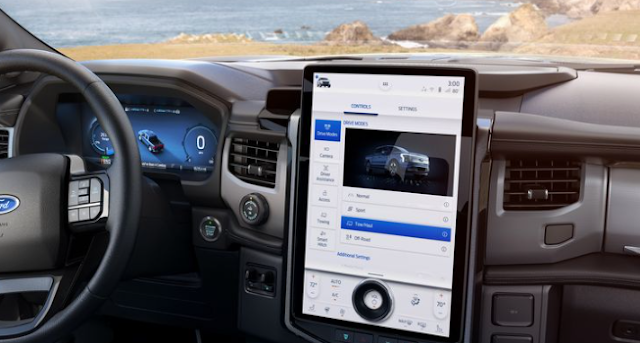- The AM band in particular is subject to electromagnetic interference from electric motors, which generate frequencies comparable in wavelength to AM radio signals.
- Many EVs have abandoned the radio band, while others—like the Ford F-150 Lightning—did include it but will soon cease to.
- A global radio aggregator and streaming service called TuneIn offers a solution, by delivering feeds from some 100,000 stations over a vehicle’s 5G wireless network access.
For most of the last 100 years, “in-car entertainment” was provided (if your car had “R&H,” or radio and heater) by only one choice—the full panoply of AM broadcasting. In the 1960s, FM became an option, then the long march through add-on eight-track, cassette, CD, and phone-based music.
Auto companies consider deep-sixing radio for the same reason they ditched the CD player—it costs money and takes up space and resources on the valuable digital dashboard.
And the interference problem is real. According to Consumer Guide, the electric motors in EVs “tend to generate electromagnetic interference with AM radio…Rapidly fluctuating voltage results in the high-level, low-frequency electromagnetic interference that reaches into the radio. Electromagnetic frequencies generated by EV motors happen to be comparable in wavelength to AM radio signals….Porsche, for one, has advised that this interference may result in static and crackling sounds. Other automakers point out such possible audio annoyances as distortion, buzzing and signal fading.”
One solution to the interference problem is accessing terrestrial radio through the 5G signal in most new cars, and that’s the niche occupied by TuneIn, a global radio aggregator and streaming service that delivers music, news, sports and podcasts to an audience of 75 million monthly users.
In an Autoweek interview, TuneIn CEO Rich Stern said that the service includes 100,000 radio stations, as well as such oddities as the audio from Jeopardy and other television feeds. That’s one way for TV sports junkies who aren’t paying for the privilege can get their game coverage. “Radio is still a vibrant medium,” Stern said. “The average listener tunes in 4.5 hours a day, and that blows Netflix out of the water.”
Stern said TuneIn’s goal is “upleveling broadcast radio, making it global and as smart as satellite. At TuneIn, we believe in the long tail.” Sirius XM has certainly cut into AM/FM listenership, but not fatally. TuneIn’s interface is made for the larger tablet-style infotainment screens, and allows users to search by genre, by country, by language. The platform is ad-based, but Stern said that the full range of non-commercial radio is offered as a public service.


No comments:
Post a Comment